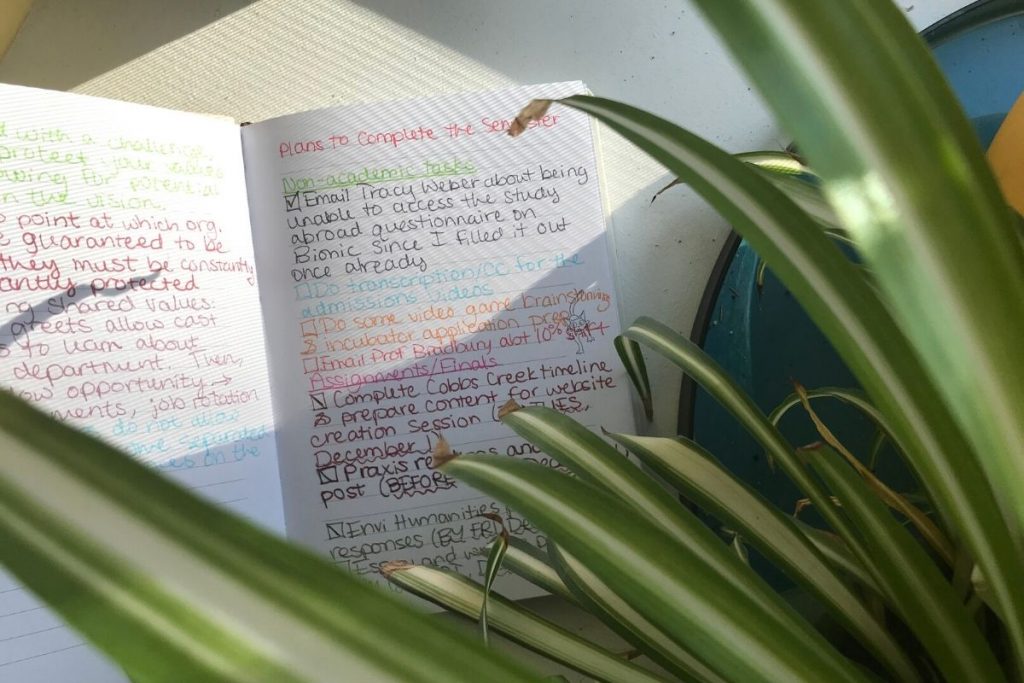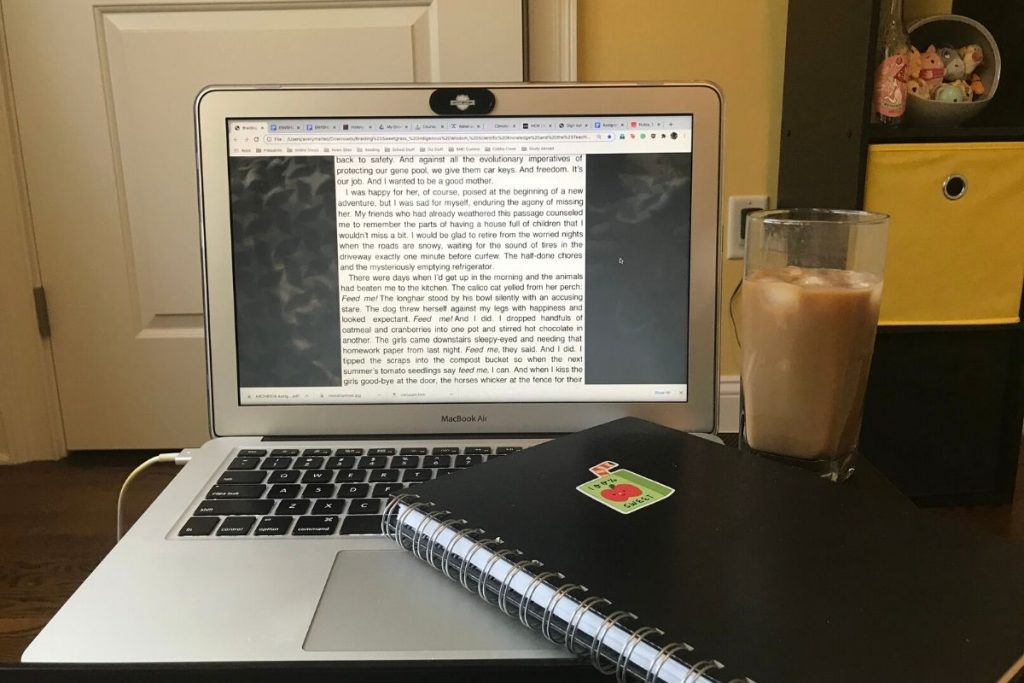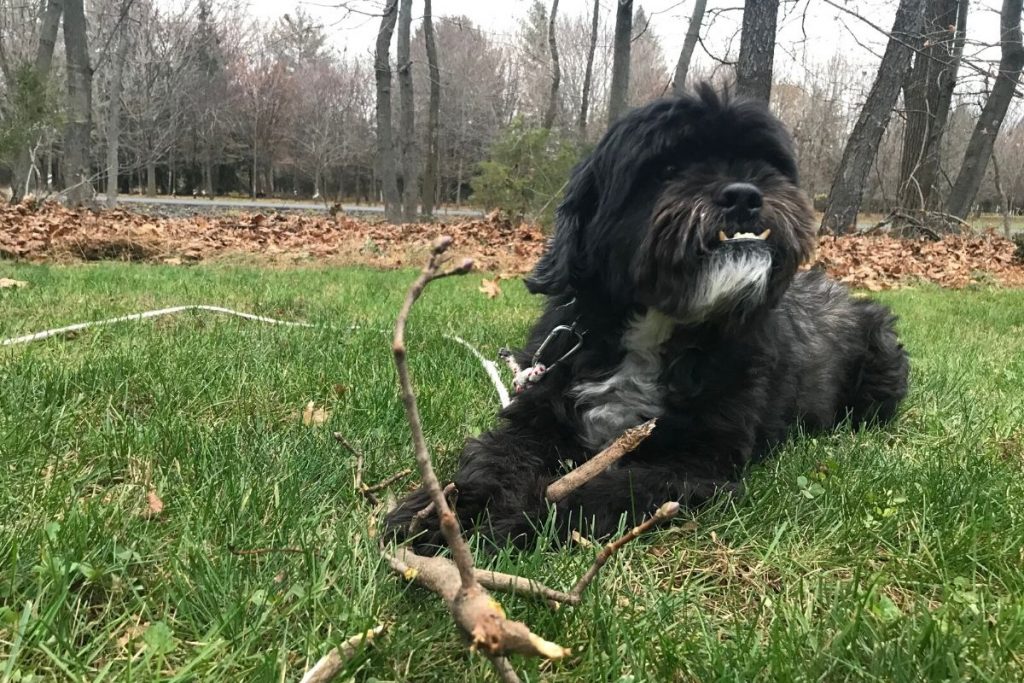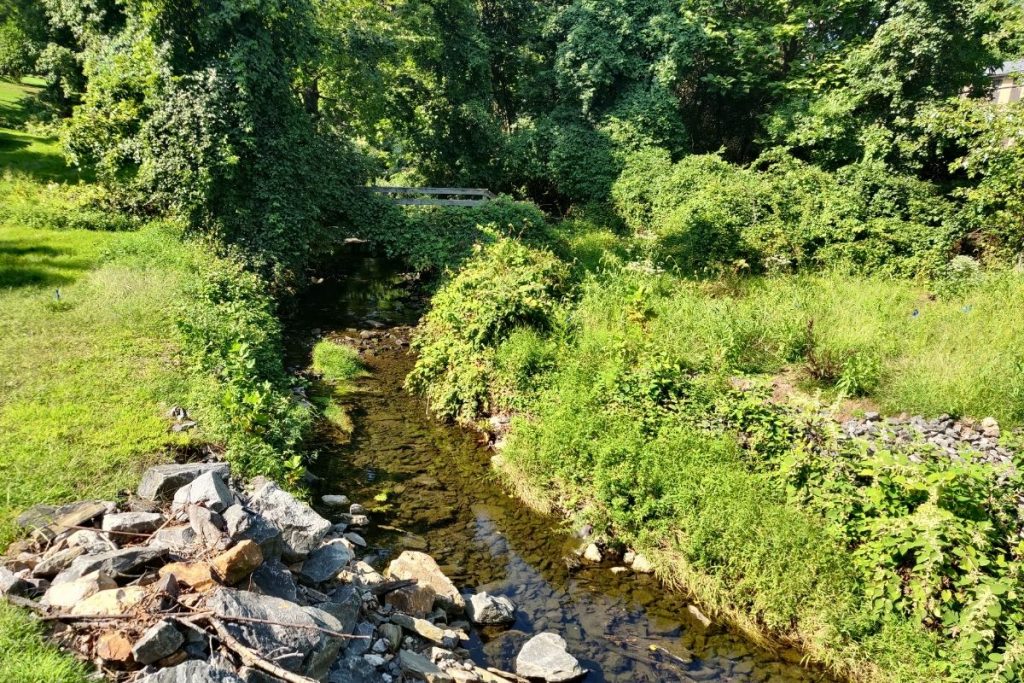My name is Avery Matteo, and I’m an Environmental Studies major from Skillman, New Jersey.
I figured there’s no better time to give you all a glimpse into my life as a Bryn Mawr student than during the strikingly beautiful month of April. The cherry blossoms are beginning to bloom, the weather is nice, and the campus feels quite blissful.
Now that I’m done gushing about spring at Bryn Mawr, let’s get started with my day!
10 a.m.
I’m not enrolled in any classes that begin earlier than 11:10 a.m. this semester, which is relieving for a night owl like myself. I appreciate having a leisurely start to my days, and usually retrieve a late breakfast or jump straight to lunch.
I also live in Erdman, so it only takes a few moments to run downstairs and grab meals from the dining hall. This morning I picked up a gluten-free waffle, vegan sausages (my favorite!), scrambled eggs, and strawberry-flavored water.

10:30 a.m.
After breakfast, I spent half an hour finishing a book for my English class at Haverford called Planetary Lines. As an Environmental Studies major and English minor, the course is a perfect fit for my academic interests. We read eco-fiction and other environmental texts, and watch weekly documentaries to supplement the readings. There’s only a handful of students enrolled in the course, though, so I always make sure to review the week’s content before joining class and jumping into discussion.
11:10 a.m.
We stayed busy in Planetary Lines today. We were engaged in a lengthy discussion about the history of colonization in the Dominican Republic, environmental protection, Afro-Carribean religious traditions, and the theme of fluidity. Interesting, right?
12:30 p.m.
Once class ended at 12:30, I headed to lunch. While waiting in line, I stocked up on some of my favorite snacks — fruits and yogurts — for my mini fridge.
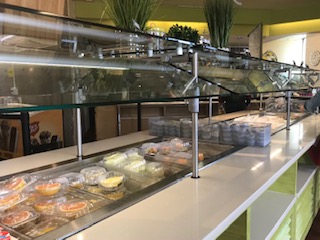
I also grabbed some noodles, vegetables, and tuscan minestrone soup, which is one of my favorite items to see on the lunch menu.

1:30 p.m.
After lunch, I walked to Campus Center to pick up some packages, and seeing the blooming flowers in front of Denbigh on my way there really brightened my mood!
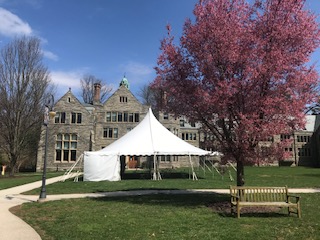
Before heading back to my room, I picked up an iced coffee from Uncommon Grounds. The café is offering two dollar iced coffees of any size during the month of April, and I couldn’t help but purchase one.
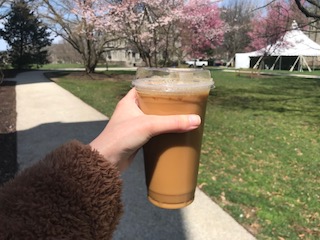
2 p.m.
I worked on my midterm essay for Post-1945 American Literature, an English class here at Bryn Mawr. I decided to write about domestic pleasure in Gwendolyn Brooks’ Maud Martha, one of my new favorite novels. I’m excited to work on the essay more extensively over the next several days.
I also squeezed in another brief walk to capture photos of the emerging signs of spring before my next class. The row of trees that lead to Rockefeller Hall are my favorite natural feature on campus!
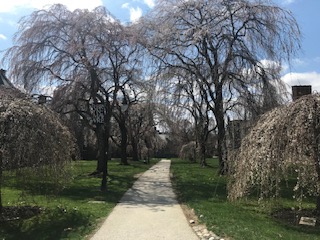
2:40 p.m.
At 2:40 I attend Fish and Community, a Praxis course at Haverford in the Environmental Studies department. My peers and I help run Haverstand, a locally sourced fish and farmstand that happens bi-weekly at Haverford College and in Ardmore. I am responsible for marketing and outreach efforts, so I spend most of my time on flyer distribution, social media, and other promotional endeavors.
We’ve also begun planning community engagement projects that we’ll be working on for the rest of the semester. I learned during class today that I’ll be collaborating with Philadelphia high school students on a podcast documenting the oral histories of people of color in the seafood harvesting and processing in the Mid-Atlantic — and I feel honored to have a chance to share these locally and culturally important narratives.
5:30 p.m.
In the evening, I met up with my friend and hallmate for dinner. She also has an adorable emotional support kitten named Morrigan, so we spent some time cuddling and playing together before I retreated back to my room to complete homework.
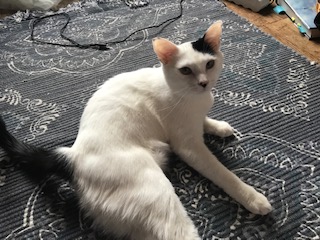
6:30 p.m.
From 6:30 until bedtime, I wrote down a list of summer internships and their deadlines before cracking down on more midterm assignments. Being busy at this time of year isn’t always fun, but munching on Smartfood popcorn and seeking the support of friends is more than enough to get me through a work-heavy day.
From quiet mornings in my dorm room to laughing with friends before retiring to bed, I feel so fortunate to be fully immersed in the environments and communities that Bryn Mawr has provided me. I hope you enjoyed following a day in my life, and feel free to leave a comment if you have additional questions about the Bryn Mawr student experience!

